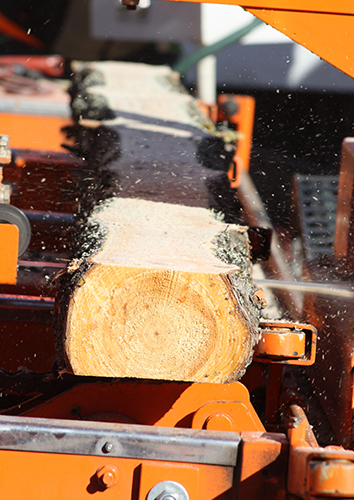Saw types
Industrial saws are usually so-called frame saws, where the logs are sawn through schematically. The amount of sawing waste is very large, because the through sawing is done according to the diameter of the top of the log, and because the planks are edged. It requires over a double amount of log tree to produce one cubic metre of ready sawn timber.

Frame saws have a restricted thickness capacity. For most saws the thickest permissible log is 37 cm. This way attentive quality wood sawyers get the “over-sturdy” logs and, for example, the “too short” red hearted pines growing on rock. Industrial saws aim at quantity and mostly produce construction timber; quality wood can hardly be found in timberyards.
Portable circular saws enable more versatile ways of sawing than frame saws. Portable circular saws are the most common household saws. Many quality wood producers are dedicated users of circular saws, too.
Band sawing machines are by far the most versatile saw type and the most used in specialty wood production. Logs can be sawn in very many ways. Band sawing machines are also superior in their capacity sturdiness; a one metre thick log is not a problem. The length of the logs may also vary from short piece of one metre to an overlong mast tree.
Band sawing machine is slower than the before mentioned saw types, but the yield, which may rise as high as 70 % of the raw material. In addition, the quality of the sawn timber has more importance than the sawing speed.